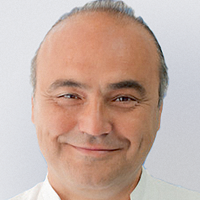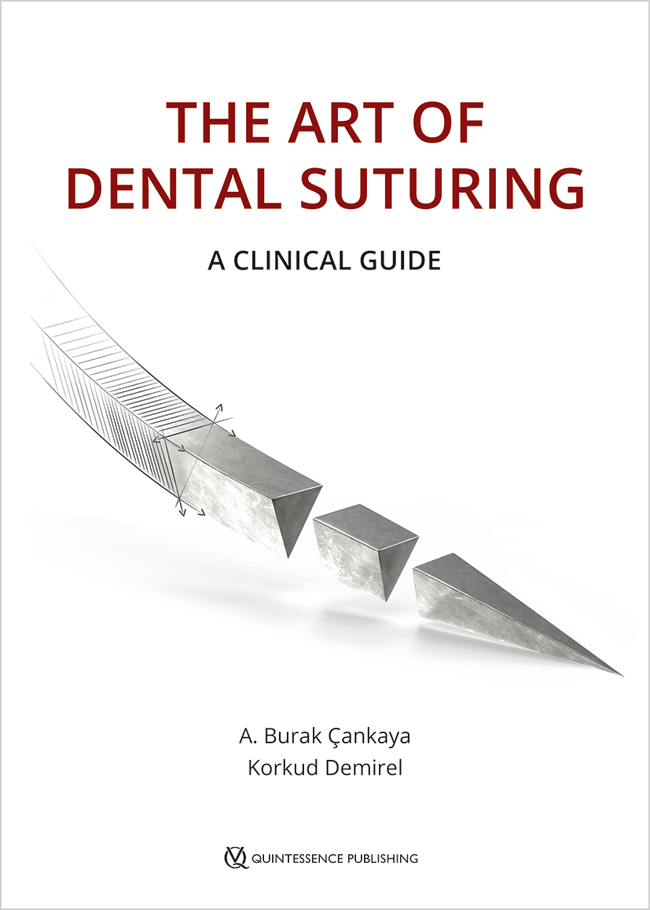International Journal of Periodontics & Restorative Dentistry, 4/2015
DOI: 10.11607/prd.2049, PubMed ID (PMID): 26133138Pages 488-497, Language: EnglishYaman, Duygu / Demirel, Korkud / Aksu, Seden / Basegmez, CansuModified coronally advanced tunnel (MCAT) technique with connective tissue graft (CTG) was used in treating multiple adjacent Miller Class III gingival recessions in nine patients. Clinical evaluations were recorded at baseline and 12 months after surgery. The results showed that 50% of complete root coverage and 78% of mean root coverage were attained 1 year after surgery and interdental space fill was 73% at 12 months. The study demonstrated that CTG using the MCAT technique may be an efficient way to treat multiple adjacent Miller Class III gingival recessions, especially when aiming for interdental space fill. Success, however, seems to be related to the amount of tissue present initially.
Quintessence International, 8/2013
DOI: 10.3290/j.qi.a29613, PubMed ID (PMID): 23616979Pages 631-634, Language: EnglishGencay, Koray / Tuna, Elif Bahar / Yaman, Duygu / Ozgen, Mehmet / Demirel, KorkudIatrogenic trauma can be defined as any adverse condition in a patient resulting from treatment by a physician or dentist. Orthodontic treatment carries with it the risks of tissue damage and treatment failure. The aim of this article is to present traumatic oral tissue lesions resulting from iatrogenic orthodontic origin with a 2-year follow-up period based on orthodontic intervention followed by periodontal surgery. The management of traumatic injuries is dependent on the severity of the involvement of the periodontal tissues. While, in most cases, the elimination of the offending agent and symptomatic therapy is sufficient, in severe cases, or when the injury resulted in permanent defects, periodontal/regenerative therapy may be necessary. The dentist must be aware of these risks in order to help the patient make a fully informed choice whether to proceed with orthodontic treatment. The skill, experience, and up-to-date knowledge of dentists are the main factors to prevent possible iatrogenic traumas.
Keywords: dental injury, dental trauma, iatrogenic trauma, orthodontic treatment
International Journal of Oral Implantology, 2/2013
PubMed ID (PMID): 23926586Pages 145-152, Language: EnglishBasegmez, Cansu / Karabuda, Zihni Cuneyt / Demirel, Korkud / Yalcin, SerdarPurpose: The purpose of this randomised controlled trial is to compare the efficacy of two techniques for enhancing peri-implant keratinised mucosa: acellular dermal matrix allograft versus free gingival grafts.
Materials and methods: Thirty-six patients having implant sites with less than 1.5 mm of keratinised mucosa width were randomly assigned to two groups. Thirty-six implants placed in 18 patients received acellular dermal matrix allografts (ADM group), while 36 implants placed in 18 individuals received free gingival grafts (FGG group). Plaque index (PI), gingival index (GI), probing depth (PD) and the width of attached mucosa (WAM) were measured at baseline and at 1, 3 and 6 months following surgery.
Results: WAM in the FGG group was significantly greater than the ADM group at 3 (P = 0.026) and 6 months (P 0.001). In the FGG group, final gain of WAM was greater (1.58 mm in ADM group, 2.57 mm in FGG group) (P 0.001) and postoperative relapse was smaller (2.68 mm in the ADM group, 1.73 mm in the FGG group) (P 0.001). PI and GI scores were greater in the ADM group at 6 months (P = 0.016 and P = 0.61, respectively). The FGG group demonstrated a greater PD value at 3 months (P 0.001), however there was no significant difference between the groups at 6 months (P = 0.317).
Conclusions: Although ADM allografts are capable of increasing the width of peri-implant keratinised mucosa, FGGs seem to be more effective. ADM allografts may be the application of choice at implant sites in need of major grafts and in patients where a donor site should be avoided for medical or psychological reasons.
Keywords: acellular dermal matrix, free gingival graft, peri-implant keratinised mucosa
International Journal of Oral Implantology, 2/2012
PubMed ID (PMID): 22866290Pages 139-145, Language: EnglishBasegmez, Cansu / Ersanli, Selim / Demirel, Korkud / Bölükbasi, Nilüfer / Yalcin, SerdarAims: The objective of this randomised controlled trial was to compare the efficacy of two techniques for increasing the amount of keratinised mucosa around implants: free gingival grafts versus classic vestibuloplasty.
Materials and methods: Sixty-four patients with 64 implants presenting keratinised mucosa 1.5 mm and showing signs of peri-implant mucositis were randomly assigned to two groups. Thirty-two implants received free gingival grafts (FGG group) while 32 implants were treated via vestibuloplasty (VP group). Plaque Index (PI), Gingival Index (GI), probing depth (PD) and the width of attached mucosa (WAM) were measured at baseline and 1, 3, 6 and 12 months following surgery.
Results: WAM in the FGG group was significantly greater than the VP group at 3, 6 and 12 months (P = 0.000). In the FGG group, the final gain in WAM was greater (2.36 mm in FGG group, 1.15 mm in VP group) (P = 0.000) and the postoperative relapse was smaller (2.00 mm in FGG group, 3.06 mm in VP group) (P = 0.000). The VP group had higher PD values at 3, 6 and 12 months (P = 0.02, P = 0.024, P = 0.000, respectively).
Conclusions: The application of FGG is a more predictable method for enhancing the width of attached mucosa in the vicinity of implants compared with classic vestibuloplasty.
Keywords: attached mucosa, free gingival graft, keratinised mucosa, peri-implant health





